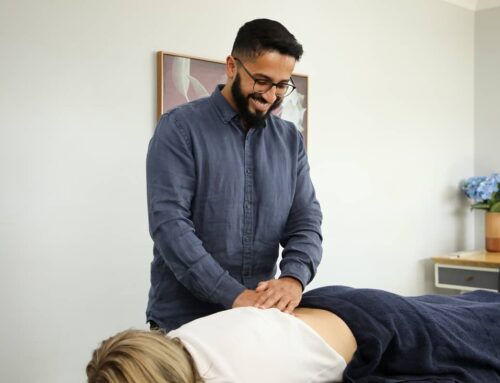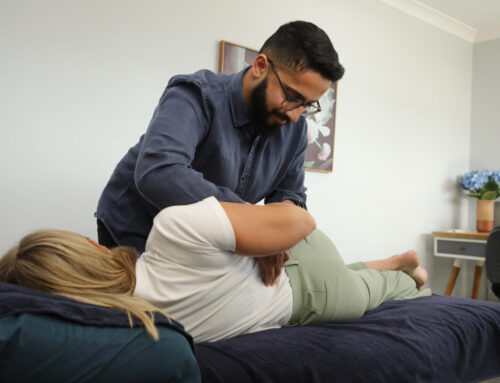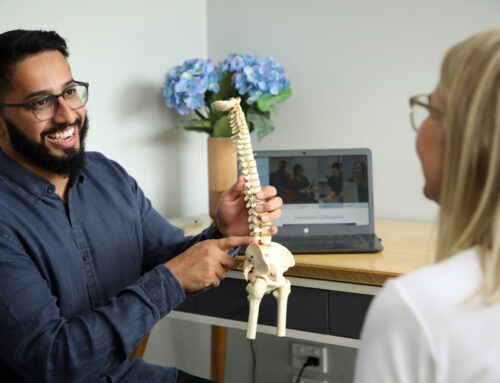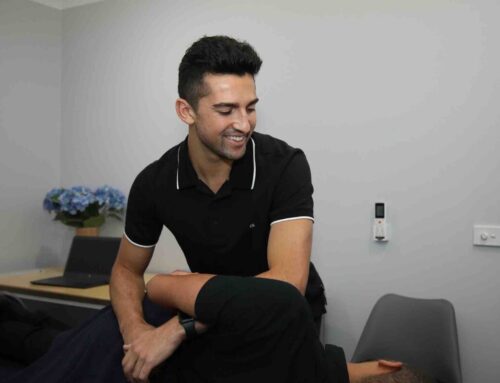Have you been experiencing pain or stiffness in the mid-back region? It’s possible that your middle back isn’t moving as well as it could.
A sedentary lifestyle or long days sitting with poor posture can lead to decreased mobility in the spine, causing stress to other structures such as the muscles and ligaments that connect to our spine.
 Anatomy of the Mid Back (also known as the Thoracic Spine)
Anatomy of the Mid Back (also known as the Thoracic Spine)
The mid back consists of 12 vertebrae bones stacked on top of each other. The vertebrae are joined by discs, facet joints and rib joints. Both facet joints and rib joints can contribute to mid back symptoms of pain or movement constraint.
Restoring Movement in the Mid Back
Loss of thoracic mobility can lead to rounding of the shoulders and forward head posture. Over time, this can increase the chances of developing conditions such as shoulder impingement, headaches and even osteoporotic compression fractures.
Having greater thoracic mobility is extremely helpful when it comes to achieving full function and range of motion of the back, neck and shoulder.
The video below helps to show the relationship between the mid back, shoulders and neck. On the left, poor posture is shown which impacts the function of the shoulders significantly. On the right, posture is corrected with shoulders that are no longer internally rotated, and an up-right mid back and neck, allowing for full mobility.
Improving your mid back mobility along with strengthening surrounding areas can also reduce the risk of future episodes of pain and restriction.
Time to try some mobility exercises
Loosen up your mid back with flexion, extension and rotation exercises – here are a few of my favourite foam rolling exercises, which are an excellent way to release stiffness in your mid-back (see video below). Consistency is key! Make these exercises a part of your daily routine and you might begin to notice a substantial difference in the feeling through your mid back.
How Can Osteopathy Help?
If exercises aren’t helping with your mid back pain, then it is time to see a professional! As your osteopath, we will take a detailed history and perform a physical exam to find the underlying cause of the problem. From here, we will develop a plan with you, focussing on treatment (massage, mobilisation, manipulation, dry needling) & management (patient education & exercise rehabilitation). Altogether with the aim of reducing your pain, increasing your function and maintaining these changes in the long-run!
 If you are experiencing thoracic pain, make an appointment as we may be able to help you at Pakenham Osteopathy. Book online here! Or call us on 5941-4157!
If you are experiencing thoracic pain, make an appointment as we may be able to help you at Pakenham Osteopathy. Book online here! Or call us on 5941-4157!
You can email me directly dylan@pakenhamosteopathy.com.au if you have any questions. Thanks for reading!
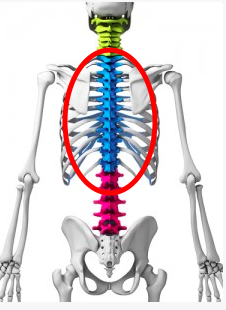 Anatomy of the Mid Back (also known as the Thoracic Spine)
Anatomy of the Mid Back (also known as the Thoracic Spine)